 |
| Judith Curr |
Since becoming president and publisher of HarperCollins's HarperOne Group in April 2018, Judith Curr has reinvigorated the Group's established imprints--HarperOne, Amistad and HarperEspañol--and is launching a new imprint, HarperVia, that will publish books from around the world in English, principally in translation. The new imprint's slogan is "books that take you everywhere," and the aim is, HarperVia says, to offer "readers a chance to encounter other lives and other points of view and celebrate the universal desire for discovery, understanding, and connection through exceptional storytelling." The first three titles will be published in the fall--the first one in September--and the next four early next year, as HarperVia moves toward its goal of publishing 24 titles annually. (For details about the first seven titles, see below.)
The imprint, whose name means "road" in Latin and "by way of," has many unusual aspects. Appropriately for a publisher with an international emphasis, besides the HarperVia editors in New York, colleagues at HarperCollins in the U.K. and Australia--specifically, David Roth-Ey, executive publisher at HarperCollins UK, and James Kellow, CEO of HarperCollins Australia--will also acquire books for HarperVia, an approach that will "get as many voices into the mix as possible," Curr says. The books will be published, where rights allow, in all English-speaking markets as HarperVia titles.
 In addition, HarperVia will benefit from the recent international expansion of HarperCollins, which now has publishing operations in 16 languages. Aided by staff around the world who together "know every language," Curr points out, HarperVia can acquire titles much earlier in the publishing process than is typically the case for U.S. publishers, who often wait until publication in the home countries of the authors and then need to have books and manuscripts translated into English just to evaluate them. "In HarperCollins worldwide, we have a group of internationally minded people," Curr says. "I can easily find someone to read something in any language." HarperVia will be an attractive choice as a publishing partner for authors who don't write in English and are seeking to be published in the English-speaking world.
In addition, HarperVia will benefit from the recent international expansion of HarperCollins, which now has publishing operations in 16 languages. Aided by staff around the world who together "know every language," Curr points out, HarperVia can acquire titles much earlier in the publishing process than is typically the case for U.S. publishers, who often wait until publication in the home countries of the authors and then need to have books and manuscripts translated into English just to evaluate them. "In HarperCollins worldwide, we have a group of internationally minded people," Curr says. "I can easily find someone to read something in any language." HarperVia will be an attractive choice as a publishing partner for authors who don't write in English and are seeking to be published in the English-speaking world.
Curr is the ideal person to lead HarperVia. A native of Australia who has held publishing positions in the U.S. since 1996 and until early last year was president and publisher of the Atria Publishing Group at Simon & Schuster, Curr has always published international books and books in translation. After joining HarperOne, she wanted, she says, to focus on fiction, but didn't want to have "just another fiction imprint" competing for the same books as other U.S. fiction imprints.
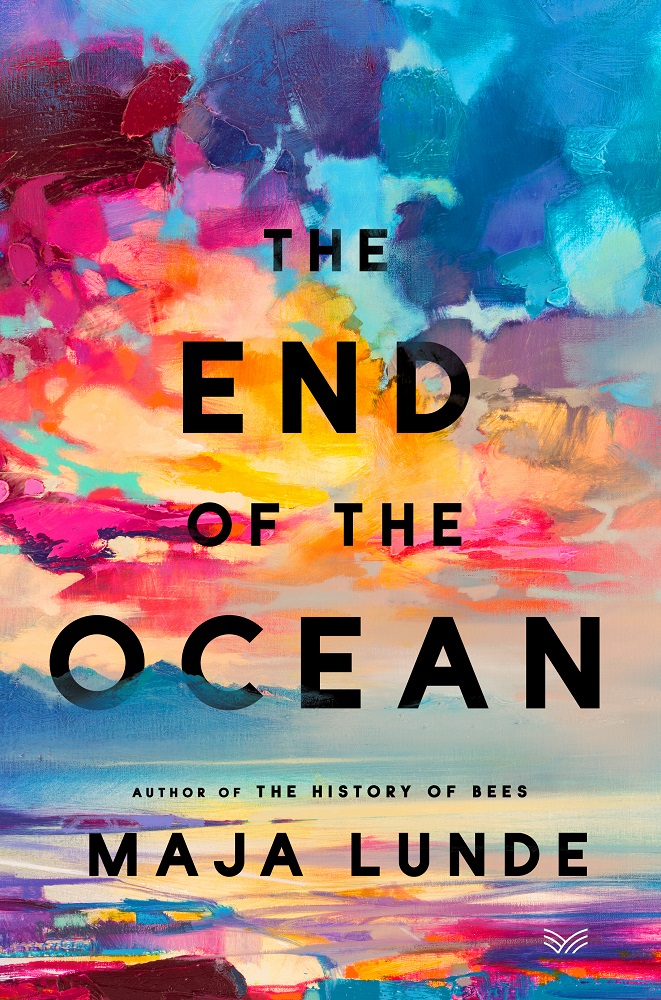 As a result, besides the international emphasis, HarperVia titles are distinguished because they aren't "just" novels, Curr says. They address a range of political and cultural issues that aren't often addressed in the U.S. and are like "warning signs," she continues. "They make points without hitting the reader over the head. Fiction is the only place left to tell the truth." At the same time, they make for good reads. "Often in literature where there's friction, you'll find good storytelling," Curr explains, adding that Netflix and HBO have helped people be "more open to stories from other parts of the world. We have some really great stories that should all find their audiences."
As a result, besides the international emphasis, HarperVia titles are distinguished because they aren't "just" novels, Curr says. They address a range of political and cultural issues that aren't often addressed in the U.S. and are like "warning signs," she continues. "They make points without hitting the reader over the head. Fiction is the only place left to tell the truth." At the same time, they make for good reads. "Often in literature where there's friction, you'll find good storytelling," Curr explains, adding that Netflix and HBO have helped people be "more open to stories from other parts of the world. We have some really great stories that should all find their audiences."
HarperVia's first three titles are debut novels that it acquired before publication in their original territories and have since been published and appeared on bestseller lists. A few titles have been written in English but those have international themes and settings. HarperVia's first titles are all fiction, but the imprint intends to publish some narrative nonfiction eventually, perhaps as much as 20% of its list, Curr says.
Another distinct approach taken by HarperVia is highlighting the translators of its books: each translated HarperVia title will include a note from the translator. "The translators are very enthusiastic about this," Curr says. Establishing strong connections with translators also will help HarperVia find the right people to translate its titles and in a timely way.
 In a similar vein, HarperVia aims to find narrators for the audiobook editions of its titles who "understand the underlying language" of the settings of the books.
In a similar vein, HarperVia aims to find narrators for the audiobook editions of its titles who "understand the underlying language" of the settings of the books.
For the past year, the focus at HarperVia has been on setting up operations, working with scouts, acquiring the first titles (HarperVia has bought nearly 20 novels so far), working with translators, setting up systems and preparing for the launch of the first list. "After a year of being out of daily publishing," Curr says, "it's exciting to be back into that now." HarperVia was unveiled at BookExpo and received "great support," Curr adds. "Booksellers and librarians are very excited about the idea," which dovetails with many stores' and libraries' emphasis on stories of cultures and traditions from around the world. Media has also been supportive. (More on marketing below.)
Curr notes, too, that many of the books that HarperVia publishes can be promoted in local communities. For example, Then the Fish Swallowed Him by Amir Ahmadi Arian, which is set in Iran, should have a special appeal to the more than a million estimated expat Iranians in the U.S., many in New York and California. With each book, Curr says, "Booksellers and librarians will find something to handsell or promote in cultural communities."
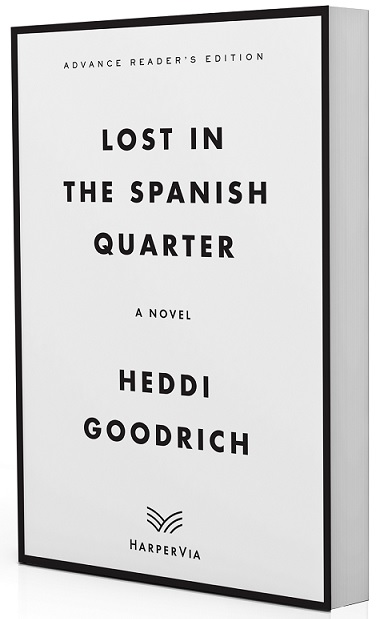 Another unusual, striking part of HarperVia is its approach to galleys. All HarperVia galleys are plain and white, with a HarperVia logo on the cover and a photo of the book and jacket inside, emphasizing the brand and emphasizing that "we are building something new," Curr says. "Imprints do count if we make them stand for something, and it's important for the bookseller in handselling. If the consumer eventually picks up on that later, that's fine, too."
Another unusual, striking part of HarperVia is its approach to galleys. All HarperVia galleys are plain and white, with a HarperVia logo on the cover and a photo of the book and jacket inside, emphasizing the brand and emphasizing that "we are building something new," Curr says. "Imprints do count if we make them stand for something, and it's important for the bookseller in handselling. If the consumer eventually picks up on that later, that's fine, too."
The straightforward galley design will also distinguish HarperVia's titles at a time when there is "a race to get more special effects on galleys," which don't work for all books. In addition, HarperVia authors, for many of whom English is a second language, don't have a platform in the English-speaking world, so by building up the imprint's visibility, HarperVia can create a platform, and "the author can stand on that," Curr adds.
 With the support of the publisher, Shelf Awareness celebrates the launch of HarperVia, the new HarperCollins imprint headed by Judith Curr that will publish 24 books a year, "mostly fiction, mostly in translation," beginning this fall.
With the support of the publisher, Shelf Awareness celebrates the launch of HarperVia, the new HarperCollins imprint headed by Judith Curr that will publish 24 books a year, "mostly fiction, mostly in translation," beginning this fall.




 In addition, HarperVia will benefit from the recent international expansion of HarperCollins, which now has publishing operations in 16 languages. Aided by staff around the world who together "know every language," Curr points out, HarperVia can acquire titles much earlier in the publishing process than is typically the case for U.S. publishers, who often wait until publication in the home countries of the authors and then need to have books and manuscripts translated into English just to evaluate them. "In HarperCollins worldwide, we have a group of internationally minded people," Curr says. "I can easily find someone to read something in any language." HarperVia will be an attractive choice as a publishing partner for authors who don't write in English and are seeking to be published in the English-speaking world.
In addition, HarperVia will benefit from the recent international expansion of HarperCollins, which now has publishing operations in 16 languages. Aided by staff around the world who together "know every language," Curr points out, HarperVia can acquire titles much earlier in the publishing process than is typically the case for U.S. publishers, who often wait until publication in the home countries of the authors and then need to have books and manuscripts translated into English just to evaluate them. "In HarperCollins worldwide, we have a group of internationally minded people," Curr says. "I can easily find someone to read something in any language." HarperVia will be an attractive choice as a publishing partner for authors who don't write in English and are seeking to be published in the English-speaking world. As a result, besides the international emphasis, HarperVia titles are distinguished because they aren't "just" novels, Curr says. They address a range of political and cultural issues that aren't often addressed in the U.S. and are like "warning signs," she continues. "They make points without hitting the reader over the head. Fiction is the only place left to tell the truth." At the same time, they make for good reads. "Often in literature where there's friction, you'll find good storytelling," Curr explains, adding that Netflix and HBO have helped people be "more open to stories from other parts of the world. We have some really great stories that should all find their audiences."
As a result, besides the international emphasis, HarperVia titles are distinguished because they aren't "just" novels, Curr says. They address a range of political and cultural issues that aren't often addressed in the U.S. and are like "warning signs," she continues. "They make points without hitting the reader over the head. Fiction is the only place left to tell the truth." At the same time, they make for good reads. "Often in literature where there's friction, you'll find good storytelling," Curr explains, adding that Netflix and HBO have helped people be "more open to stories from other parts of the world. We have some really great stories that should all find their audiences." In a similar vein, HarperVia aims to find narrators for the audiobook editions of its titles who "understand the underlying language" of the settings of the books.
In a similar vein, HarperVia aims to find narrators for the audiobook editions of its titles who "understand the underlying language" of the settings of the books. Another unusual, striking part of HarperVia is its approach to galleys. All HarperVia galleys are plain and white, with a HarperVia logo on the cover and a photo of the book and jacket inside, emphasizing the brand and emphasizing that "we are building something new," Curr says. "Imprints do count if we make them stand for something, and it's important for the bookseller in handselling. If the consumer eventually picks up on that later, that's fine, too."
Another unusual, striking part of HarperVia is its approach to galleys. All HarperVia galleys are plain and white, with a HarperVia logo on the cover and a photo of the book and jacket inside, emphasizing the brand and emphasizing that "we are building something new," Curr says. "Imprints do count if we make them stand for something, and it's important for the bookseller in handselling. If the consumer eventually picks up on that later, that's fine, too."
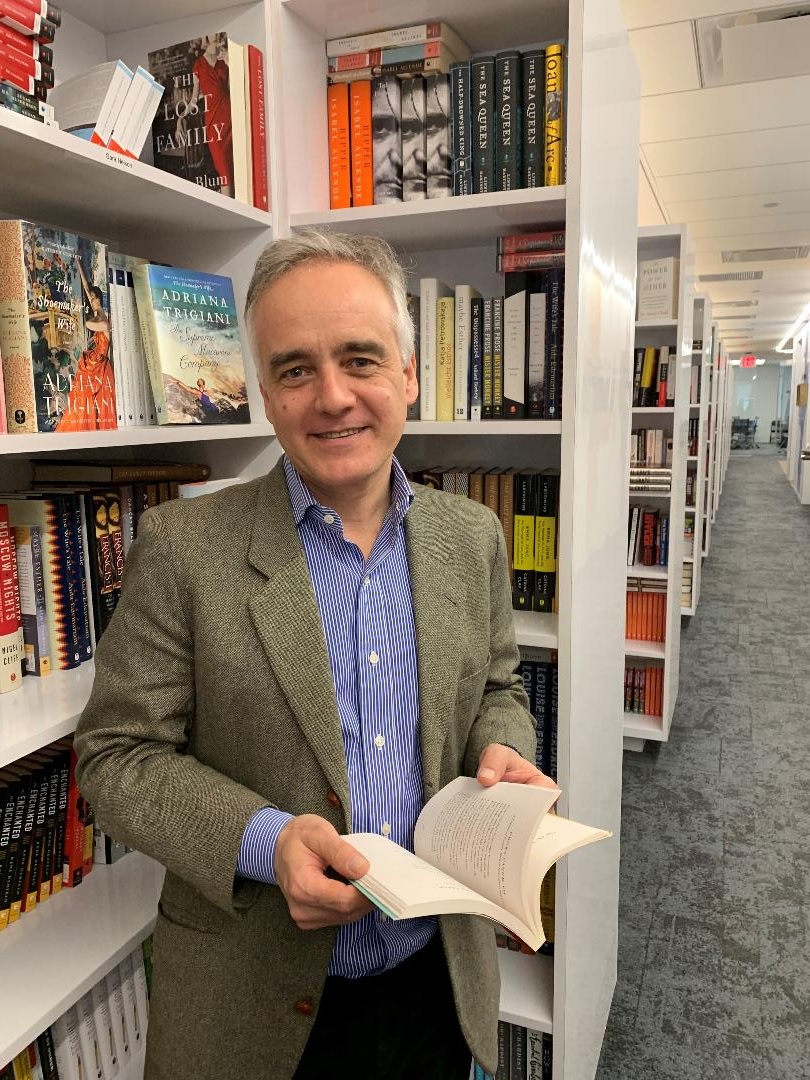



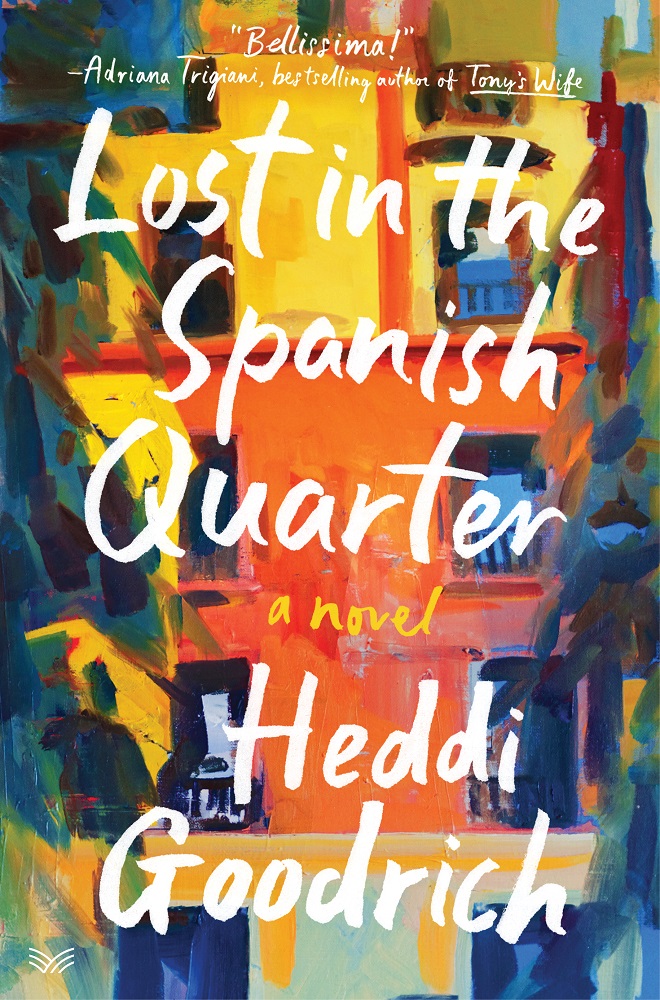 Lost in the Spanish Quarter by Heddi Goodrich ($25.99, 9780008359966, September 5, 2019). Heddi met her first love while she was an American exchange student in Naples, Italy. Years later, when Pietro contacts her to apologize, Heddi is transported back to her college days in the labyrinthine streets of Naples' Spanish Quarter. This coming of age romance about an Italian boy and an American student--which Judith Curr says focuses on "nostalgia for a person's first adult romance"--is sure to appeal to fans of Elena Ferrante's Neapolitan novels and Beautiful Ruins by Jess Walter. Author Heddi Goodrich, an American who studied in Naples before moving to New Zealand, originally wrote Lost in the Spanish Quarter in Italian and translated it into English herself. This is her debut novel.
Lost in the Spanish Quarter by Heddi Goodrich ($25.99, 9780008359966, September 5, 2019). Heddi met her first love while she was an American exchange student in Naples, Italy. Years later, when Pietro contacts her to apologize, Heddi is transported back to her college days in the labyrinthine streets of Naples' Spanish Quarter. This coming of age romance about an Italian boy and an American student--which Judith Curr says focuses on "nostalgia for a person's first adult romance"--is sure to appeal to fans of Elena Ferrante's Neapolitan novels and Beautiful Ruins by Jess Walter. Author Heddi Goodrich, an American who studied in Naples before moving to New Zealand, originally wrote Lost in the Spanish Quarter in Italian and translated it into English herself. This is her debut novel. The German House by Annette Hess, translated by Elisabeth Lauffer ($25.99, 9780062910257, December 3, 2019). In 1963 Germany, 24-year-old Eva Bruhns recalls World War II as a hazy memory that left Frankfurt in ruins from Allied bombing. Now the streets are repaved, new stores constructed and Eva is eager to start a fresh life with a wealthy suitor. But when Eva is hired as a translator for concentration camp victims in the 1963 Frankfurt Auschwitz trials, she learns in detail about the Holocaust and wonders why her family remains so silent about those years. Judith Curr notes that this period in Germany, a time that isn't well known, was critical because "without a reckoning with its past, Germany couldn't move forward." The German House is already a bestseller in Germany, where Annette Hess has written several popular shows for German Netflix. Her novel is sure to appeal to readers of The German Girl by Armando Lucas Correa and The Tattooist of Auschwitz by Heather Morris.
The German House by Annette Hess, translated by Elisabeth Lauffer ($25.99, 9780062910257, December 3, 2019). In 1963 Germany, 24-year-old Eva Bruhns recalls World War II as a hazy memory that left Frankfurt in ruins from Allied bombing. Now the streets are repaved, new stores constructed and Eva is eager to start a fresh life with a wealthy suitor. But when Eva is hired as a translator for concentration camp victims in the 1963 Frankfurt Auschwitz trials, she learns in detail about the Holocaust and wonders why her family remains so silent about those years. Judith Curr notes that this period in Germany, a time that isn't well known, was critical because "without a reckoning with its past, Germany couldn't move forward." The German House is already a bestseller in Germany, where Annette Hess has written several popular shows for German Netflix. Her novel is sure to appeal to readers of The German Girl by Armando Lucas Correa and The Tattooist of Auschwitz by Heather Morris.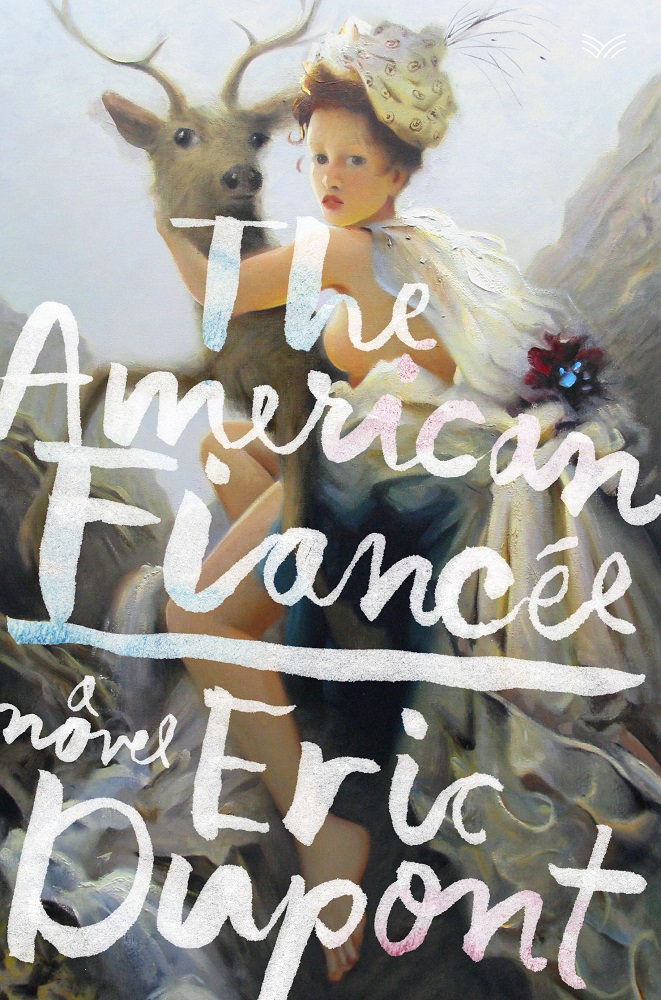 The American Fiancée by Éric Dupont, translated by Peter McCambridge ($27.99, 9780062947451, February 11, 2020). The American Fiancée is a globe-spanning saga about the Lamontagnes, whose matriarch's cookbook shapes three generations of the family's fortunes. Louis Lamontagne travels from his native Quebec to the U.S., then to Europe during World War II. Madeleine, his daughter, opens a popular restaurant chain using her grandmother's recipes. Finally, Madeleine's son Gabriel follows a woman to Berlin and uncovers shocking family secrets. Dupont weaves these far-reaching threads into what Judith Curr calls "a work of art and magic" that has already sold 60,000 copies in Quebec. The American Fiancée was a finalist for the Giller Prize, the Prix littéraire France-Québec and the Prix des cinq continents, and a winner of the Prix des libraires and the Prix littéraire des collégiens. It is Dupont's fourth novel.
The American Fiancée by Éric Dupont, translated by Peter McCambridge ($27.99, 9780062947451, February 11, 2020). The American Fiancée is a globe-spanning saga about the Lamontagnes, whose matriarch's cookbook shapes three generations of the family's fortunes. Louis Lamontagne travels from his native Quebec to the U.S., then to Europe during World War II. Madeleine, his daughter, opens a popular restaurant chain using her grandmother's recipes. Finally, Madeleine's son Gabriel follows a woman to Berlin and uncovers shocking family secrets. Dupont weaves these far-reaching threads into what Judith Curr calls "a work of art and magic" that has already sold 60,000 copies in Quebec. The American Fiancée was a finalist for the Giller Prize, the Prix littéraire France-Québec and the Prix des cinq continents, and a winner of the Prix des libraires and the Prix littéraire des collégiens. It is Dupont's fourth novel.




